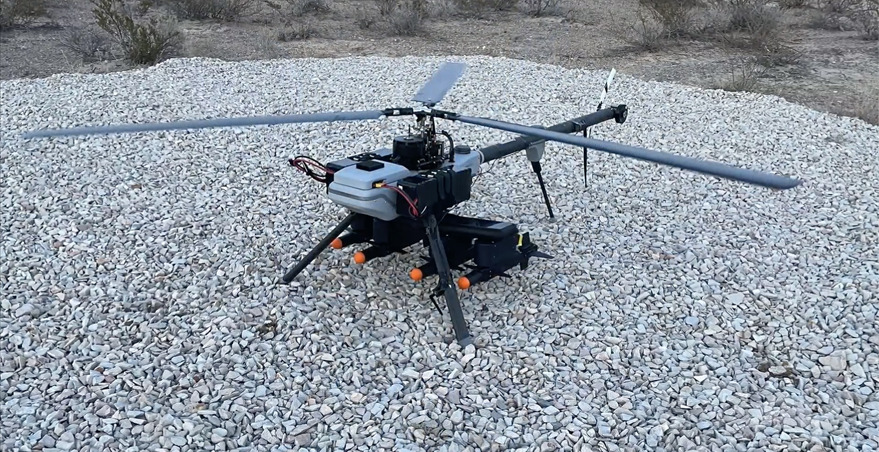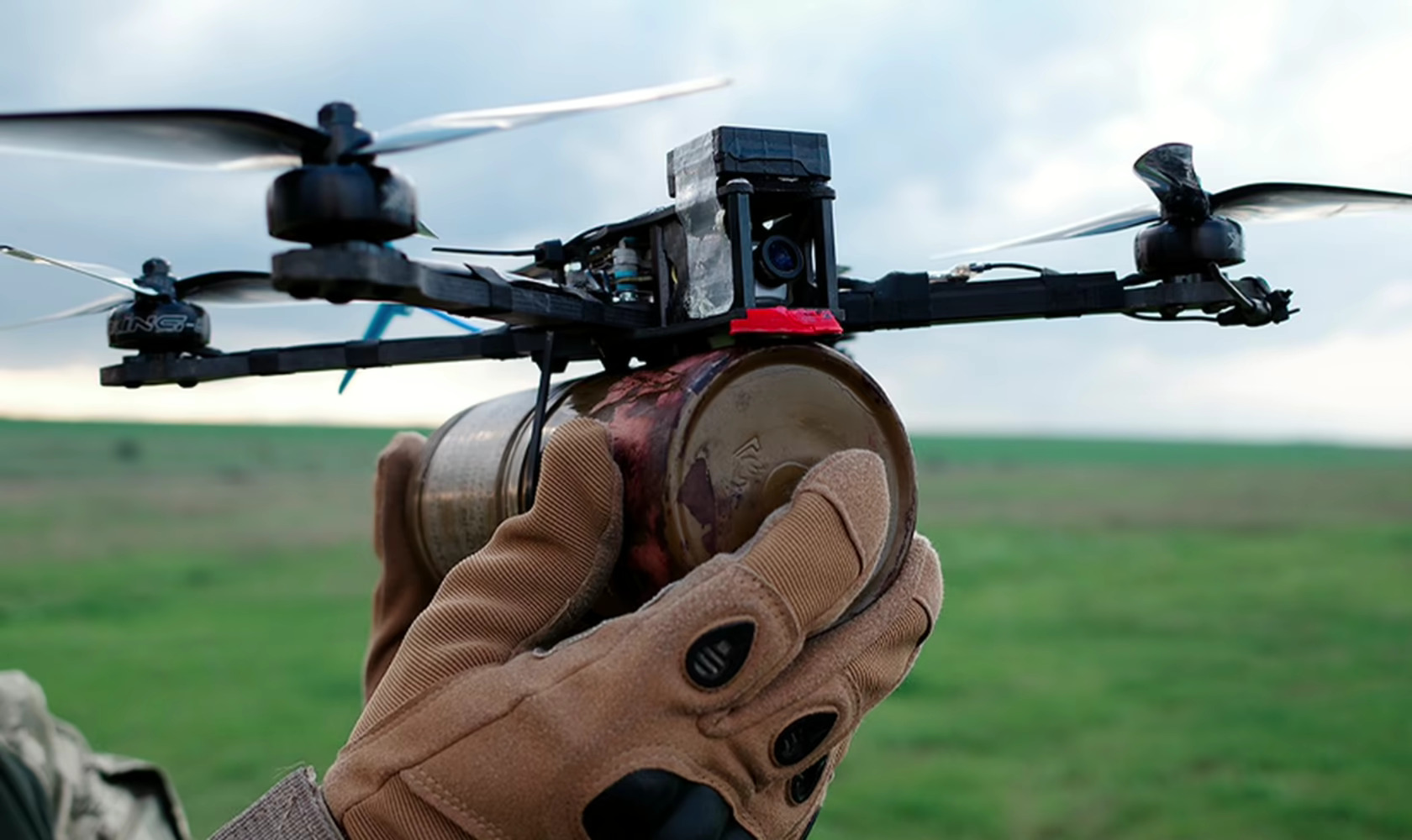Taking a cue from simple drones being used to drop ammunition and bombs on ground troops in anti-infantry roles, the maker of the Switchblade series of loitering munitions is testing a specialized UAV for the role.
The firm’s rotary wing drone carried explosives payload in its underbelly, released on mock targets on the ground, in an attempt to develop a dedicated remote-controlled aircraft for the purpose, instead of the civilian drones that are tweaked for the role.
AeroVironment’s Switchblade 300 and Switchblade 600 were extensively used in Ukraine. A video released by the leading US-based company showed the drone at a test range dropping the “GPS-guided” bombs from the drone on mannequins.
Representing human targets, it appeared that two scenarios of target placement were tested, differing in the distance between the personnel and the presence of military vehicles, to check the damage caused by the bombs.
The practice of retrofitting leisure, commercially available off-the-shelf UAVs was first pioneered by the Islamic State (IS) in Syria and Iraq. Ukraine later used better quality civilian quadcopters and installed Rocket-Propelled Grenade (RPG) rounds in the front to be flown into Russian armored vehicles and tanks.
While smaller leisure UAVs with equally smaller explosives with First-Person View (FPV) controls are also used to hit infantry, they were first preceded by quadcopters carrying bombs underneath and releasing them on Russian troops. Several videos of such attacks went viral, causing heavy Russian personnel losses. Russian units later adopted the practice.
Test Video
The video released by AeroVironment showed the helicopter-configuration drone – sporting a primary rotor and a rail rotor – taking off from the ground. The drone is the Vapor 55MX, which carries Corvid/L3 Harris Shryke munitions. The drone appeared small, almost the size of a shoulder-fired rocket launcher, ATGM, or an RPG.

Recorded by another UAV, the drone took off carrying the four small, fin-stabilized bombs and released one. It lands on one of five mannequins, splitting the body in half and considerably damaging two others.
Another video from the drone’s perspective showed it released all four munitions, three of which landed on a target that had a car surrounded by four mannequins.
The fourth bomb is heard exploding but does not appear to land on the targets in the video captured from the ground camera. A close-up recording of the damage assessment showed multiple shrapnel incisions on the car’s rear. And like the previous video, one of the bombs also fell directly on a mannequin, showing the system’s credible anti-infantry capability.
AeroVironment has described the VAPOR 55 MX as an “all-electric unmanned aircraft system.” “(It) carried four rounds simultaneously and flawlessly showcased the live fire effects of this capability.”
Battlefield Use
The platform has a credible battlefield utility in tackling small groups of soldiers in both attack and defensive situations. As a popular video from Hamas after Israel’s ground offensive in Gaza showed, a single crude bomb, albeit inaccurate, that was dropped on a group of soldiers caused it to scurry and take cover.
⚡️🇮🇱🇵🇸 Hamas quadcopter UAV DROPS GRENADE onto IDF base in Beit Hanoun, northern Gaza Strip.
Could begin to see implementation of Russia – Ukraine war style tactics with drones in the Hamas – Israeli war.
Devastating consequences will ensue. These cheap drones have caused… pic.twitter.com/GFohWLpCCe
— Zagonel (@Zagonel85) November 1, 2023
Even if such munitions do not land exactly on a soldier, unsuspecting troops, suddenly finding small mortar or grenade-sized bombs dropping around them, can be left in momentary disarray.
If the soldiers find themselves tightly bunched together at some point, the shrapnel from the bombs can injure other soldiers, restricting their ability to continue in intense, physically intensive firefights.
While the Ukrainian, Russian, and Hamas bombs are crudely stabilized with fins that often sway from the target area when released from the drones, as seen in the footage from the UAVs, the AeroVironment drone and the Shryke munitions are more stabilized. The promotional test video shows the bombs descending in a straight line.
It is not clear if the bomb release mechanism on the Vapor 55 MX has some electro-optical camera that cues the bombs. That the Shryke bombs are more accurate can be gauged from the fact that they descend straight down on the targets in a perfectly inverted position.

Modular Drones & Bombs
Corvid’s business development director, Kyle Bowen, described the Shryke as a “40-mm anti-armor modular warhead paired with a lightweight glider, offering a highly effective, low-collateral damage solution.” The bomb has a set of two fins in the front and four stabilizers in a plus-shaped configuration at the back.
Indeed, the Vapor 55 MX is also a modular platform that can be used for tactical battlefield logistics. It was first introduced in September 2022 as a “modular” UAV with a “new payload interface and tool-free quick rail mount enables quick and easy field integration of current and future payloads for increased mission flexibility.”
The latest test, therefore, just replaced the underbelly carriers with bomb-carrying rails, with a weaponized payload capacity of 4 kg. It stands to reason that each Shryke munition, therefore, weighs a kilogram.
“VAPOR’s modular payload bay and multi-sensor capacity allows for a wide range of sensors including gimbaled EO/IR, multispectral, LIDAR, communications relay, Signals Intelligence (SIGINT), armed Vertical Take-Off Landing (VTOL), as well as drop/delivery mechanism to be easily integrated or swapped,” AeroVironment said.
- The author can be reached at satamp@gmail.com
- Follow EurAsian Times on Google News




